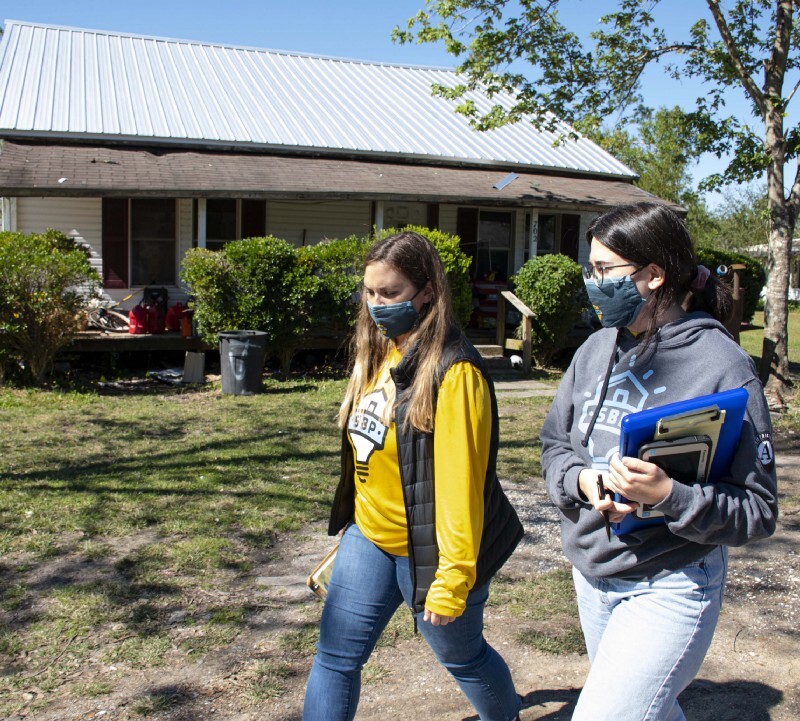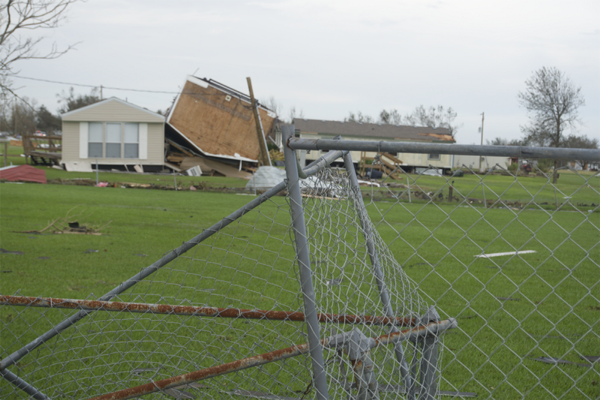In the early weeks after Hurricane Laura, when we began our gutting and mold remediation work, every single person started crying at the end of our conversations. It’s overwhelming for these homeowners who’ve just lost so much and for a few moments they had someone to be “in it” with them. Having SBP show up, do the work and prove we’re not going anywhere created such a sense of relief for people.

Hannah Roberts, left, on a home assessment in southwestern Louisiana with AmeriCorps member Olivia Barone. Hannah is the staff lead for SBP’s Disaster Response Team for Hurricanes Laura and Delta. She deployed after Hurricane Michael in Florida and Hurricane Dorian in Bahamas, leading training in field management and mold remediation processes.
Since those early conversations, I’ve done more than 50 home assessments with survivors of Hurricanes Laura and Delta. When I ask homeowners if they’ve applied for FEMA, most of the time they tell me that they are not eligible because they don’t have insurance. Or, they say their insurance will cover too much so they don’t qualify. Both of these statements reveal the disconnect that exists between FEMA and disaster survivors. It is so hard to see the additional stress added for folks who are now juggling disaster recovery alongside a pandemic and regular life demands like work, school and kids.
COVID-19 has created additional recovery challenges during this hurricane season. Instead of a FEMA assessor coming to survivors’ homes in person, survivors communicate with assessors by phone — these calls can last from 30 minutes to an hour. It’s difficult to see the damage to someone’s home by way of a few photos. And the person who is on the phone with the assessor is already in emotional distress.
I know if my grandmother lost her home in a storm like Hurricane Laura — the worst to ever hit Louisiana — she would not be able to successfully assess and communicate her damage with photos, videos or a conversation.
I decided to reach out to FEMA to make sure I fully understood the assessment and application processes so I could help our clients provide the most accurate information in order to receive the funds that they rightfully deserve.
One question on the application asks if the survivor would be willing to relocate. The representative told me that almost 90% of folks check the box that says “no” because they assume that this is referencing a permanent relocation.
In actuality, the question wants to know if the applicant is willing to relocate temporarily. When an applicant checks “no” here, they become ineligible to receive any kind of rental assistance.

Hurricane Laura Damage
I’m proud of the work we’re doing here on the ground. In the meantime, we have colleagues within SBP who are working to make disaster recovery work more efficiently and equitably. I’m hoping that as a result, FEMA will review the application process and find ways to better communicate and clarify the recovery process as a whole to survivors.

